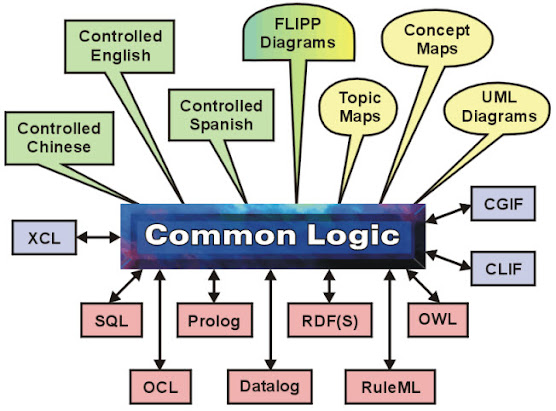Common Logic
Common Logic (CL), an ISO/IEC standard, is a logic framework intended for information exchange and transmission. The ISO documentation describes common logic thus:
"Common Logic is a logic framework intended for information exchange and transmission. The framework allows for a variety of different syntactic forms, called dialects, all translatable by a semantics-preserving transformation to a common XML-based syntax."
What common logic enables is explained by the graphic below from Introduction to Common Logic:
It seems that common logic is trying to achieve at a lower level of abstraction what I am trying to achieve with something like the Seattle Method and the forthcoming OMG Standard Business Report Model (SBRM).
What common logic does provide the semantics of a logic based system. What DATALOG does is provide the implementation of that logic based system. DATALOG is a subset of PROLOG. ISO also has a PROLOG standard. Together, the ISO Common Logic standard and the ISO Prolog standard seem to provide the complete set of what is needed to construct a complete logic based system. ISO Common Logic provides the semantics; ISO Prolog provides the syntax. That would enable a global standard machine readable knowledge representation upon which reasoning can be performed.
If not ISO Common Logic and Prolog; then what? Well, then something that properly reconciles to ISO Common Logic and ISO Prolog.
Additional Information:




Comments
Post a Comment